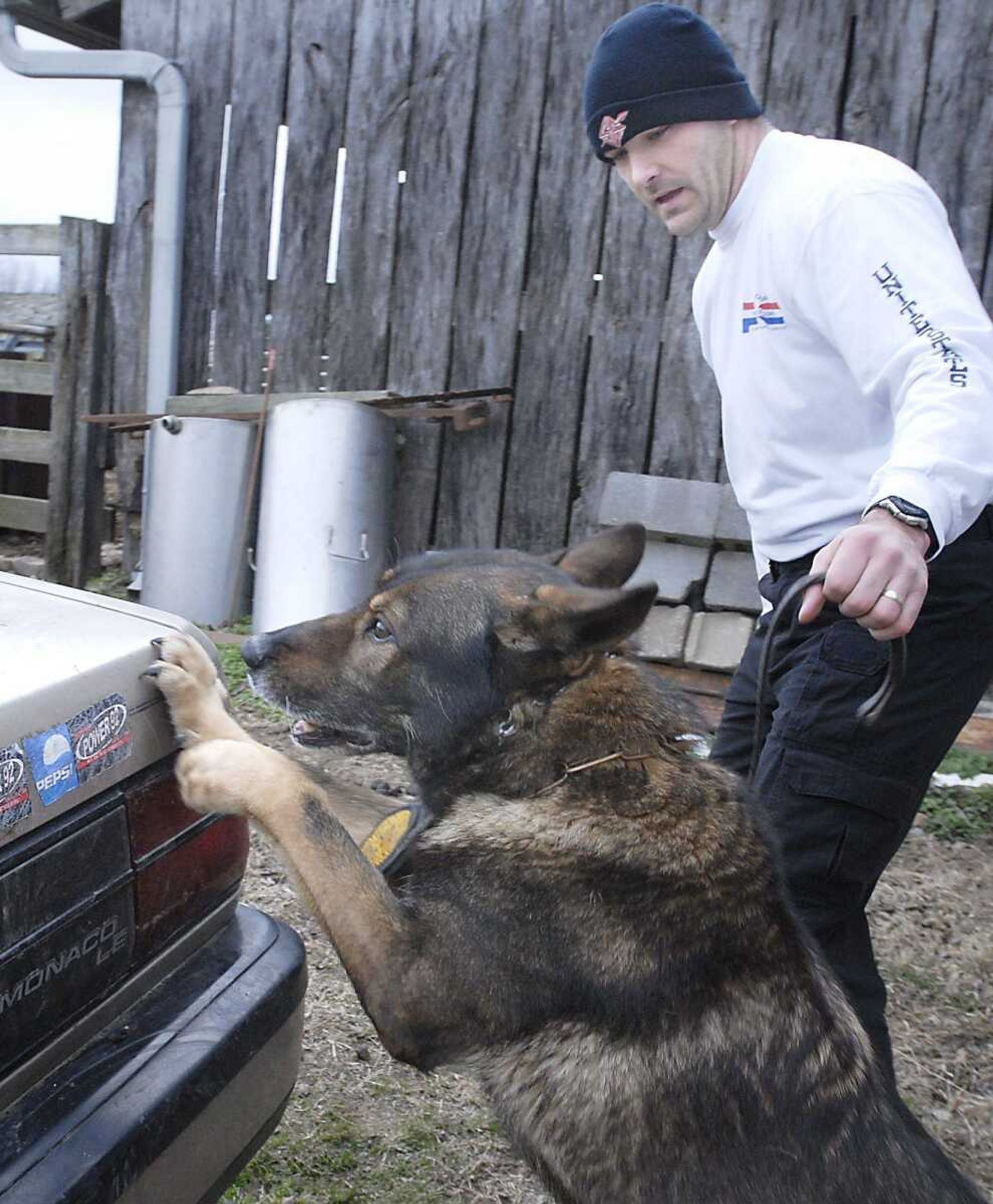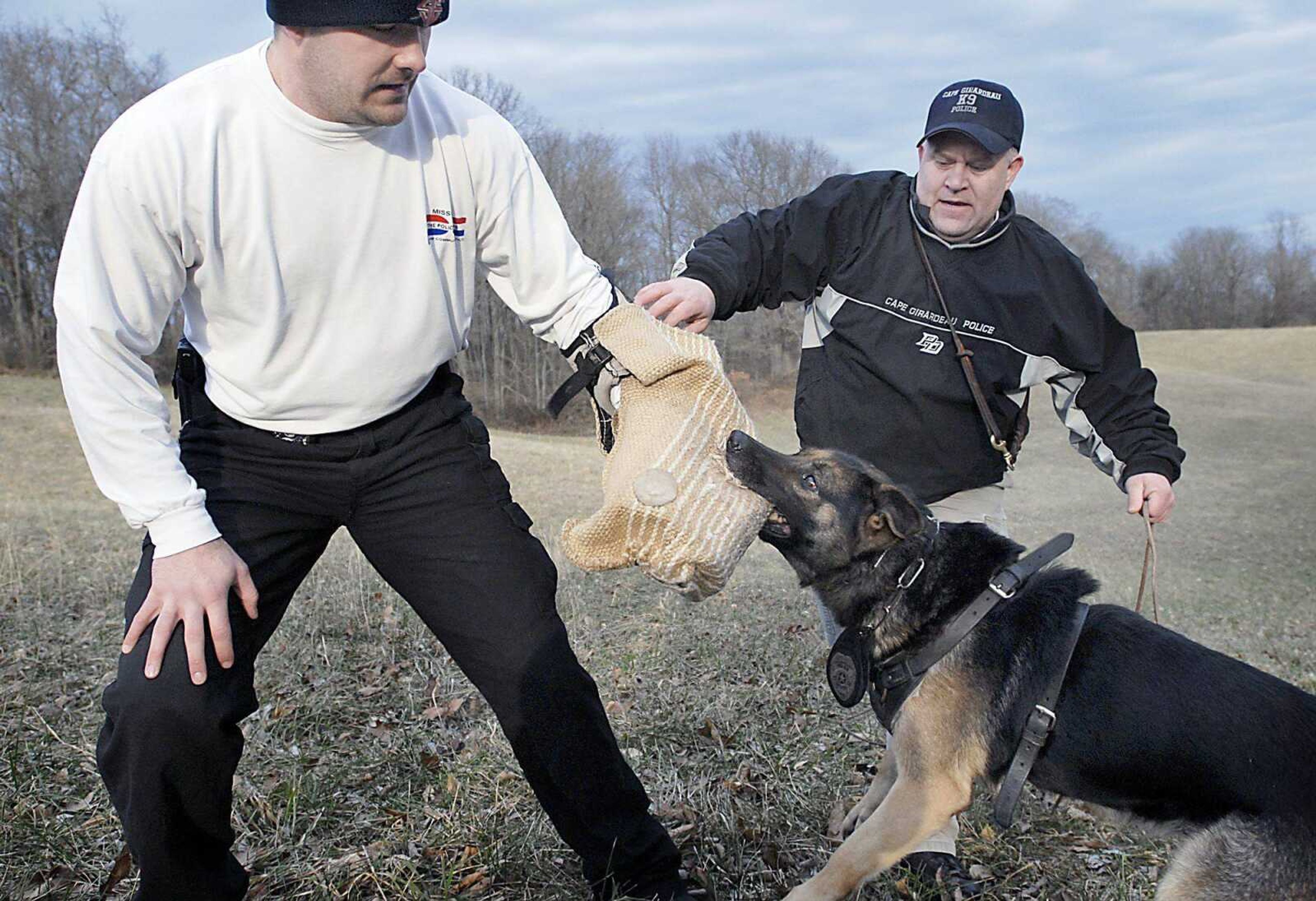Dogs in the line of duty
Law enforcement canines have become an invaluable tool for local police departments, but they assume the same risks as any other law enforcement official when they enter a dangerous situation. On Nov. 23, Toben, a Cape Girardeau police canine, apprehended a robbery suspect who had fled into a dark building...
Law enforcement canines have become an invaluable tool for local police departments, but they assume the same risks as any other law enforcement official when they enter a dangerous situation.
On Nov. 23, Toben, a Cape Girardeau police canine, apprehended a robbery suspect who had fled into a dark building.
Officer Jeff Bourbon, Toben's handler, issued several warnings before sending his canine toward the suspect, with no response.
When Toben began to bite the suspect, the man struck back by hitting and trying to choke the dog.
Though Bourbon and two other officers quickly joined the altercation and subdued the suspect, after being struck during the struggle Toben suffered a hernia that was discovered a week later.

Toben was taken off active duty, and underwent extensive surgery recently for his injury, but is expected to be fit to get back to work in March, Bourbon said.
It wasn't the first time a canine had been injured in the course of duty. In September 1993, the Cape Girardeau Police Department's first canine, Greif, was injured while chasing a drug suspect and ran between two moving cars. Greif had a leg severed in the ordeal, but survived, and lived out the remainder of his life as a retired pet for his canine handler.
An increase in public awareness as to the unique talents of law enforcement canines and how they are used has created more media attention and, sometimes, hostility toward them, said Jim Watson, director of the North American police work dog association.
Officer and canine handler Darrell Sievers of the Jackson Police Department said that although his dog, Baron, has never been injured on duty, Baron has received the occasional verbal threat.
There are documented cases everywhere of instances where people try to harm a law enforcement animal, Sievers said.
Watson said statistics of injuries to police canines are generally not recorded because law enforcement agencies are not required to report whether they use canines, but he doesn't believe there has been a drastic increase in incidents.
"It's just being reported more," he said.
While police departments are reporting incidents of canine injury more often to alert people and legislators that laws need to be tighter to protect these animals, these types of injuries are also appearing more frequently in the media because of an increased awareness of how police dogs serve their communities, Watson said.
Some states have taken action in implementing laws to protect police canines and other law enforcement animals.
A Missouri state law took effect in 2000 making it a class D felony to kill or disable a police animal, punishable by up to four years in prison.
Assault on a law enforcement animal is a class C misdemeanor, meaning a maximum jail sentence of 15 days.
There is also an increase of dogs being used in everyday situations, Watson said.
Officers are trained to jump and intervene should their dogs become engaged in a physical confrontation, canine trainer Mike Ervin said.
Usually, it doesn't come to that. Bourbon said he used Toben to track on 25 occasions last year, and of 13 successful apprehensions, only once did the canine have to resort to biting the suspect to subdue him.
Other concerns are keeping canines away from dangerous chemicals, broken glass or other dangers, such as fighting with another animal, officer Roy Rahn said.
There have been times when his dog, Bolo, has picked up on a threat to his handler, such as someone moving toward him, and reacted quickly to protect him, Rahn said.
In those situations, it's the suspect that determines what takes place, and most will immediately surrender, Ervin said.
In the back of every canine handlers' mind there's the fear that you're sending your best buddy into a situation where they could get killed, Sievers said.
"We live with the fact that we send our dogs in to save human lives," he said.
bdicosmo@semissourian.com
335-6611, extension 245
Connect with the Southeast Missourian Newsroom:
For corrections to this story or other insights for the editor, click here. To submit a letter to the editor, click here. To learn about the Southeast Missourian’s AI Policy, click here.









